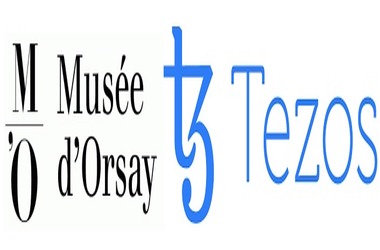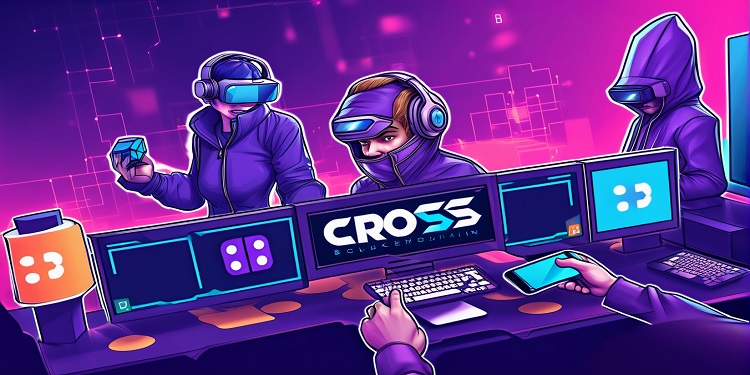 In a forward-thinking move, the Musée d’Orsay, an iconic Parisian institution steeped in art and culture, is embarking on a pioneering journey into the world of Web3. Teaming up with the Tezos Foundation and KERU, the museum is set to introduce blockchain-based digital souvenirs, revolutionizing the way visitors engage with its exhibitions. This groundbreaking collaboration coincides with the much-anticipated exhibition, “Van Gogh in Auvers-sur-Oise: The Final Months,” slated to open its doors on October 3, 2023. As part of this initiative, visitors will have the opportunity to take home two unique digital keepsakes, marking a significant stride in merging art, technology, and blockchain innovation.
In a forward-thinking move, the Musée d’Orsay, an iconic Parisian institution steeped in art and culture, is embarking on a pioneering journey into the world of Web3. Teaming up with the Tezos Foundation and KERU, the museum is set to introduce blockchain-based digital souvenirs, revolutionizing the way visitors engage with its exhibitions. This groundbreaking collaboration coincides with the much-anticipated exhibition, “Van Gogh in Auvers-sur-Oise: The Final Months,” slated to open its doors on October 3, 2023. As part of this initiative, visitors will have the opportunity to take home two unique digital keepsakes, marking a significant stride in merging art, technology, and blockchain innovation.
Musée d’Orsay’s Vision for Innovation:
Christophe Leribault, President of the Musées d’Orsay and de l’Orangerie, expressed the museum’s enthusiasm for this trailblazing endeavor. He emphasized that these digital souvenirs would serve as lasting reminders of visitors’ experiences, seamlessly integrated into their digital lives, whether on their phones, computer desks, or home screens. Additionally, the Musée d’Orsay is set to offer exclusive benefits, including a lifetime pass to the museum, further enhancing the visitor experience. The partnership with the Tezos Foundation also paves the way for conferences and educational events throughout the year, introducing the concept of Web3 to a broader museum audience.
From Web3 Exploration to Collaboration:
The Musée d’Orsay’s foray into the decentralized realm of Web3 is not arbitrary but rather a strategic progression. It builds upon the museum’s prior involvement with the Web3 Arts and Culture (WAC) Labs Fellowship program, an initiative that aims to bridge the gap between the global arts sector and the Web3 world. Guillaume Roux, Director of Development and International Relations at Musée D’Orsay, revealed that the exploration of Web3 opportunities began two years ago. Witnessing European institutions like the Belvedere, the British Museum, and the Uffizi Gallery delve into blockchain technology, Musée d’Orsay and Musée de l’Orangerie initiated their own exploration. This led to a partnership with the Tezos Foundation through the WAC Fellowship.
The WAC Fellowship program was designed to immerse cultural institutions in the intricacies of blockchain technology. It offered comprehensive education through lectures, workshops, and mentoring sessions led by industry experts. The program delved into blockchain’s potential in the cultural sphere, its legal and societal implications, and its intersection with the world of video gaming. Furthermore, participants gained hands-on experience in blockchain development.
Tezos: A Pillar of Web3 Support:
The Tezos ecosystem has played a pivotal role in supporting institutions and artists eager to venture into the realm of NFTs and Web3. In 2022, Tezos collaborated with London’s Serpentine Gallery to transform memories into NFTs. Similarly, Tezos technology was used to create an attendance token for Refik Anadol’s showcase at MoMA. In 2023, Lee Mullican’s estate brought 12 digital artworks to life on the Tezos blockchain, showcasing the foundation’s commitment to advancing art and culture in the Web3 era.
Guillaume Roux emphasized the alignment between the Tezos Foundation and the museum’s mission. This one-year partnership signifies the museum’s aspiration to evolve into a 21st-century institution, blending its 19th-century collections with contemporary digital innovations.
A Transformative Integration:
Hélène Quintin, CEO of KERU, highlighted the transformative nature of this collaboration. She emphasized that blockchain technology should serve as a means to strengthen connections rather than being an end in itself. The partnership between KERU and the Musée d’Orsay exemplifies this philosophy.
The Shaping of a New Art Landscape:
The Musée d’Orsay’s leap into Web3 reflects a broader trend of cultural institutions recognizing and leveraging the potential of this emerging paradigm. With notable museums like MoMA, Centre Pompidou, and now the Musée d’Orsay embracing Web3, the convergence of traditional and digital art worlds promises to redefine how art is experienced and appreciated in the 21st century.
Guillaume Roux acknowledged the mixed sentiments surrounding Web3 and NFTs, emphasizing the need for public institutions to approach these innovations thoughtfully and consistently. The upcoming projects with Tezos throughout this partnership will underscore the immense potential when institutions like Musée d’Orsay connect with Web3 art and artists, shaping the future of art appreciation.








